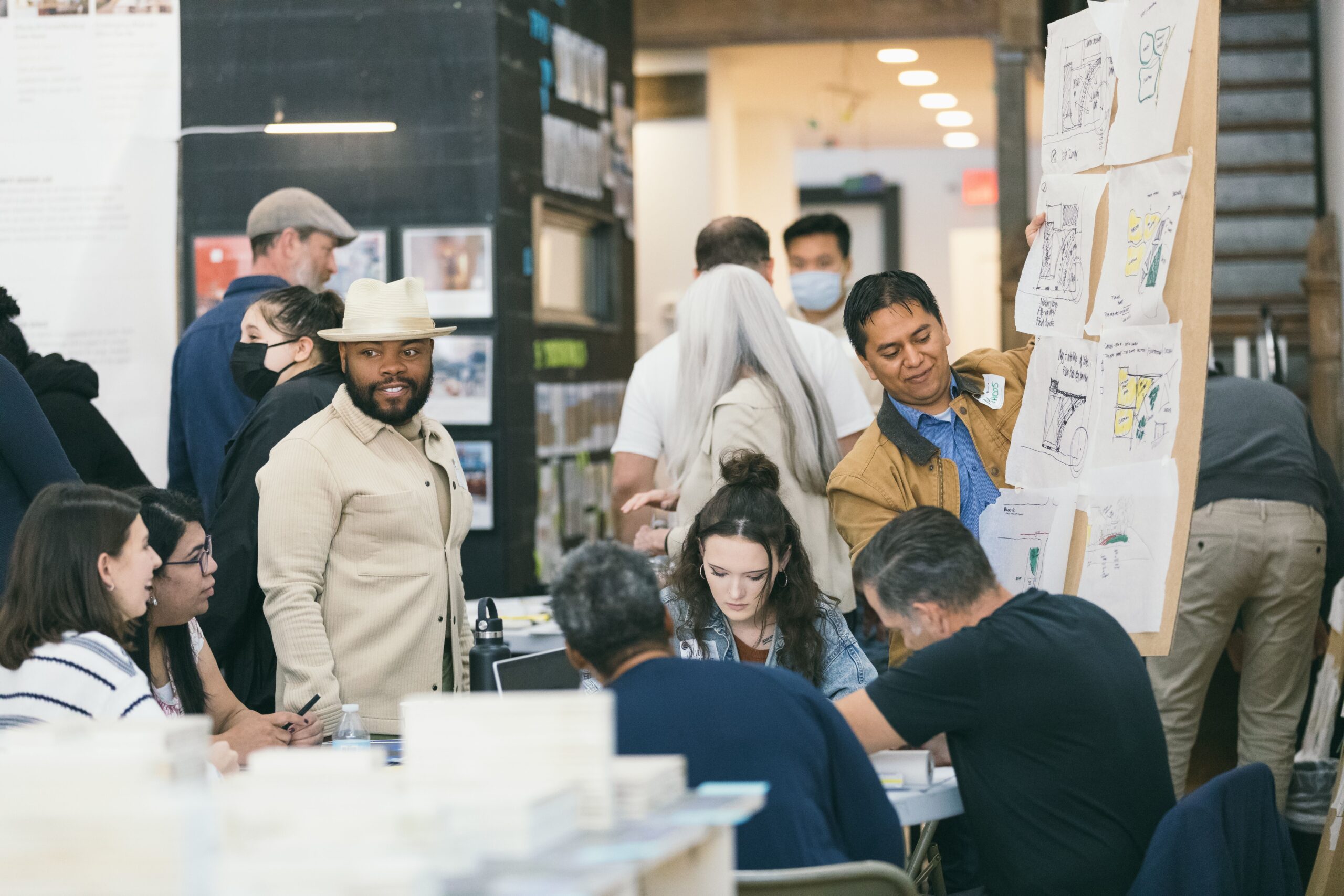
In early November, AIA Virginia partnered with the Hanbury Community Design Lab to leverage the opportunity of having hundreds of visiting designers in Richmond for its annual Architecture Exchange East conference by hosting a design charrette to reimagine a site within the Broad Street Arts District.
For two and a half hours, the charrette, led by the Hanbury team, brought together 50 architects, designers, non-profit leaders, and civic leaders to rethink how a former commercial space in Jackson Ward could be transformed into a community amenity.
“Many of the groups were trying to find a way to develop a ‘distinct identity’ that is authentic to Richmond, the Arts District, and Jackson Ward,” said Natsumi Oba, Assoc. AIA, an associate designer at Hanbury and Project Architect at Hanbury Community Design Laboratory, whose firm recently renovated 119 Broad Street in Richmond as its studio space, picking up an award in 2022 from Work Design Magazine in the process in the “New World Solutions” category.
To say that Hanbury’s team knows Broad Street — and is best suited to address its future — is an understatement. It’s also invested in that future.
“I’m a firm believer that the process [of a design charrette] is often more valuable than the end result,” said Nick Cooper, AIA, principal and design director at Hanbury. “Getting 50 great people in the room to come up with ideas is very common, but leveraging it to create impact in the city or our community.”
The site’s complex history offered participants prompts to address its significance to the neighborhood and Richmond. In the early twentieth century, Jackson Ward was a hub for Black commerce and entertainment, but by 1950, urban renewal and highway construction bifurcated the area and effectively fractured the community. A decade later, Black Richmonders had all but vacated Jackson Ward (and other neighborhoods affected by mid-century urban planning changes), further fracturing the community and leaving much of the urban fabric around what would become the Arts District derelict. Richmond’s reinvestment in the area is notable, but lingering questions about how to honor the neighborhood’s history and foster a new sense of community remain.
“We believe in our city and the arts and architecture. We saw this charrette as an opportunity to help spark and elevate the Arts District,” says Cooper. “We did conduct a pretty robust research effort this summer with our summer scholars, and it really supported the awareness of how important the Arts District can and should be for our city. We worked hand-in-hand with the Mayors’ Task Force and the Arts Commission.”
Each group had approximately 10 participants who all ranged in background and expertise, with mostly architects and designers leading the group discussions. The result, says the Hanbury team, was something impactful and meaningful to the area and, its members contend, the process was more important than the outcomes.
“Hanbury Community Design Studio feels the responsibility to truly know the community we are in and respond to the needs of the community,” said An Liu, Assoc. AIA, and designer with Hanbury. “We consolidated the ideas, and the city is now reaching out to the stakeholder of that site to try to turn it into a real project.”
Team Three is an editorial and creative consultancy based in Washington, D.C.
